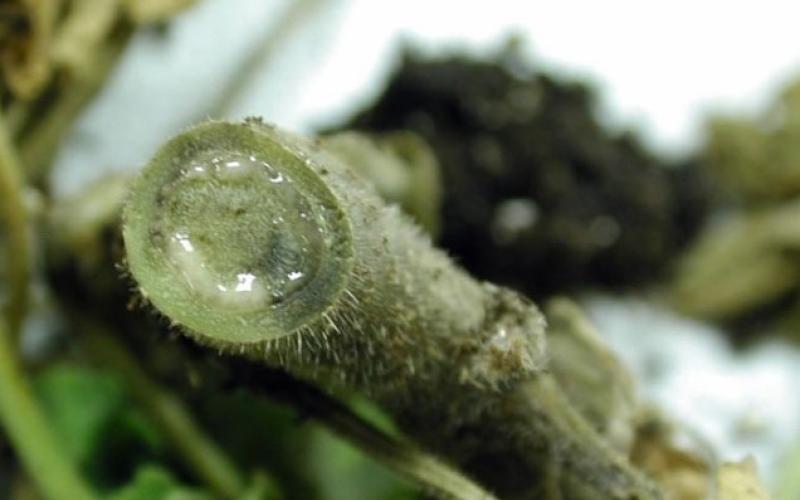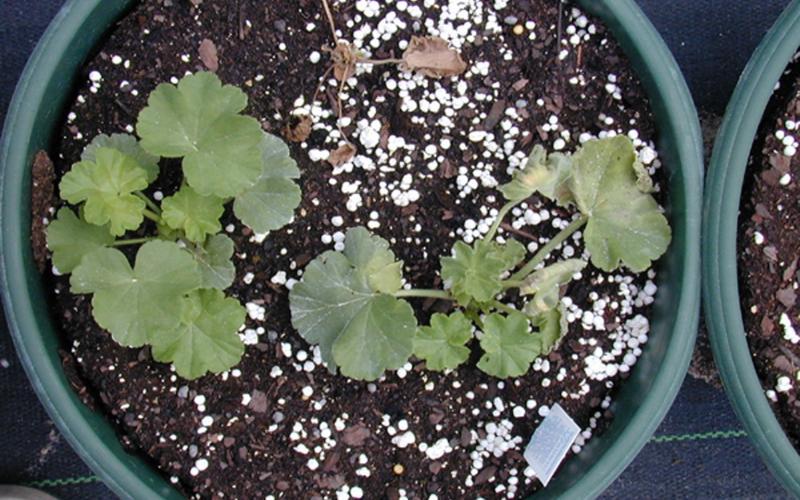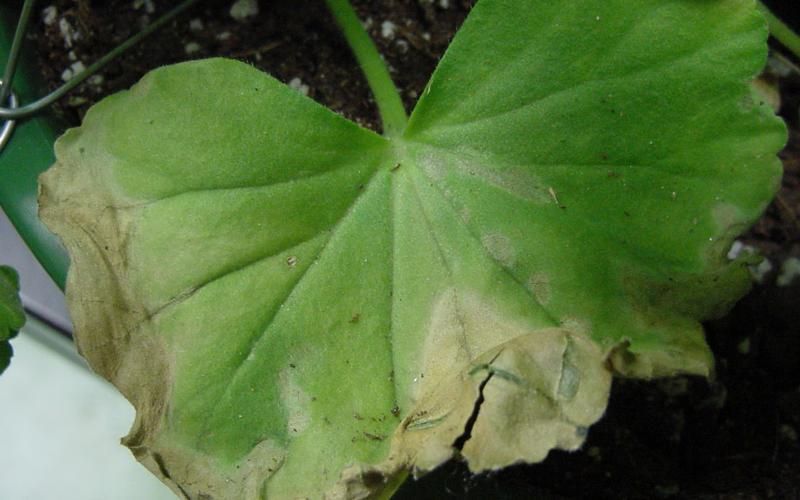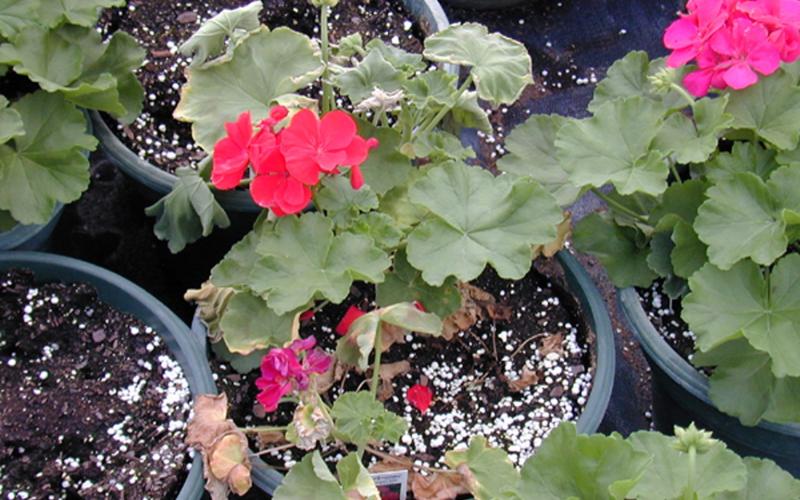Scientific name: Ralstonia solanacearum
Native range: worldwide
At Risk
Primary hosts of R. solanacearum race 3 biovar 2 include members of the Solanaceae family, such as potato, tomato, and geranium. Imported ornamental plants and cuttings, especially geraniums (Pelargonium spp.), pose a significant risk for introducing this bacterium into the U.S. Imported materials may be required to include documentation certifying they are free from this pathogen before import is allowed.
Distribution
Ralstonia solanacearum does not occur in Minnesota. Of its five races of R. solanacearum, only race 1 is found in the U.S. in several southeastern states. Most races of R. solanacearum occur in tropical or subtropical conditions. However, race 3 biovar 2 can infect plants in temperate climates. Ralstonia solancearum race 3 biovar 2 is found throughout most of the world including Mexico, but does not occur in the U.S.
Biology
Ralstonia solanacearum is a bacterium that can infect more than 200 different plants, with the Solanaceae family (potato family) being the most commonly affected. Infections can cause wilting and death of susceptible plants.
The bacterium spreads through infected plant materials such as seed potato tubers and ornamental cuttings. It can also survive soil, planting media, irrigation water, and wastewater. It spreads between fields via surface runoff water or contaminated soil that is moved on tools and equipment.
Identification
Infected plants often show partial or total wilting, followed by yellowing leaves then death of the leaf between the veins, and stunted growth. The inside of stems may become discolored and dark streaks may be visible. A sticky or slimy substance containing the bacteria may ooze from freshly cut infected stems and is especially visible when stems are placed in water.
In potatoes, infected tubers may display a ring of brown discoloration. Light pressure on a cross section may produce a bacterial ooze. On intact tubers, soil may stick to ooze near the eyes.
Look-A-likes
Wilted and yellowing leaves may be caused by environmental factors or other diseases, including other R. solanacearum strains. Root rot caused by fungi can also produce leaf wilting, yellowing of leaves, and stunted growth.
In geraniums, bacterial leaf blight caused by Xanthomonas hortorum pv. pelargonii may cause leaves to wilt and yellow, similar to R. solanacearum R3bv2, but also causes round tan to brown leaf spots. In potatoes, tuber symptoms of bacterial ring rot caused by Clavibacter michiganensis subsp. sepedonicus can look similar to those of R. solanacearum R3bv2.
Images of Ralstonia solanacearum
Regulatory Status: Regulated
There are multiple races and biovars of R. solanacearum and most are not regulated. However, one strain called race 3 biovar 2 (R3bv2) is considered an extreme threat to the United States. If R. solanacearum race 3 biovar 2 was discovered in Minnesota, actions would be taken to prevent spread and to eradicate the pathogen.
What Can Be Done?
The Minnesota Department of Agriculture (MDA) monitors for R. solanacearum through surveys and other detection methods. Visit the University of Minnesota website for information about diagnosing plant problems. The University of Minnesota Plant Diagnostic Clinic can test samples of unknown plant problems.
If you suspect Ralstonia solanacearum R3bv2 in Minnesota, please contact the MDA via Report A Pest.
Smarty Plants Podcast
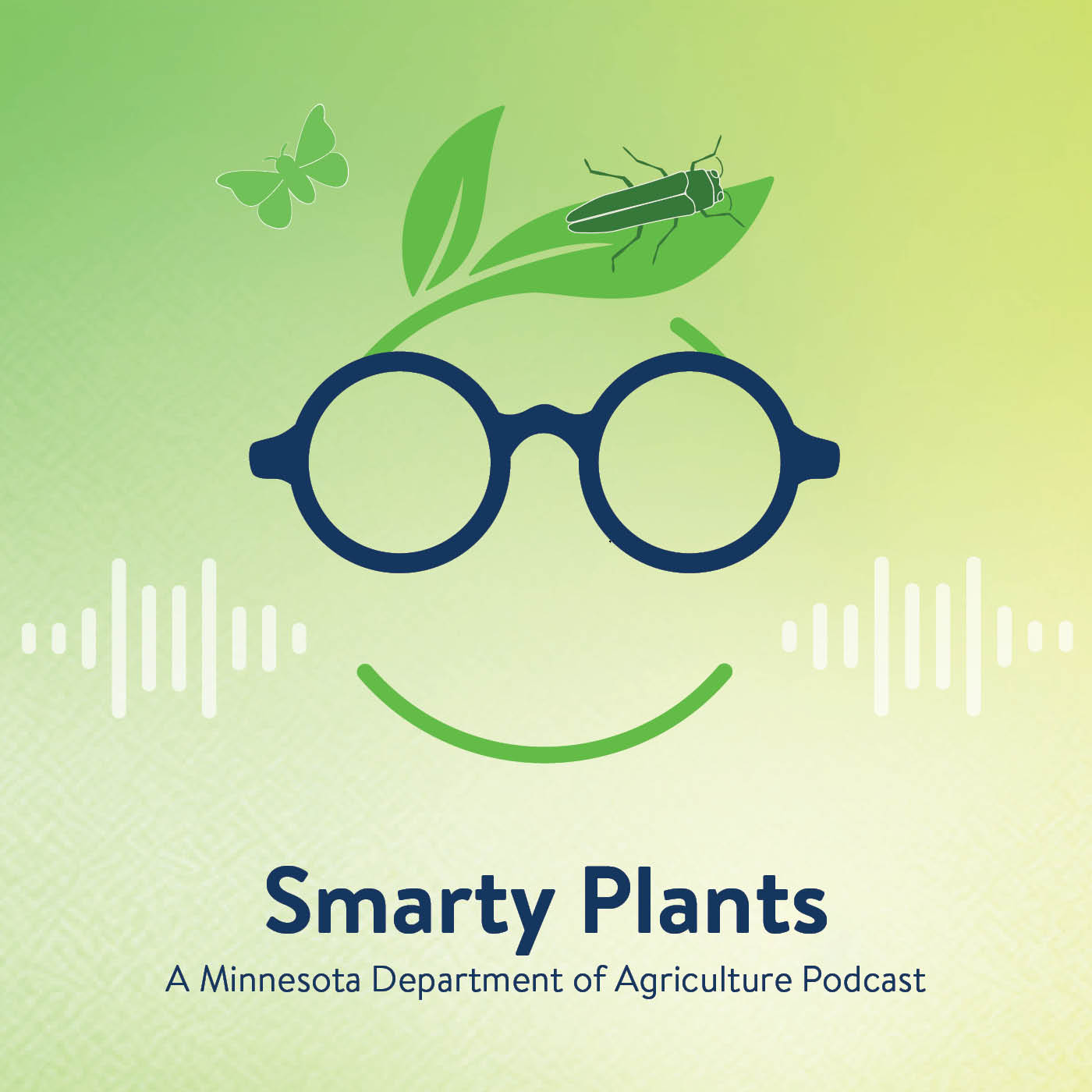
Discover Smarty Plants, the Minnesota Department of Agriculture's podcast that digs into the fascinating world of invasive species. Join expert guests as they share insights and solutions to protect our environment and agricultural resources. Visit Smarty Plants and start listening today.
